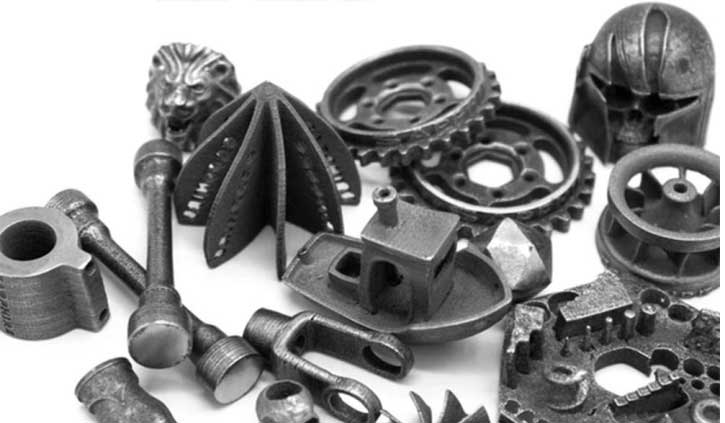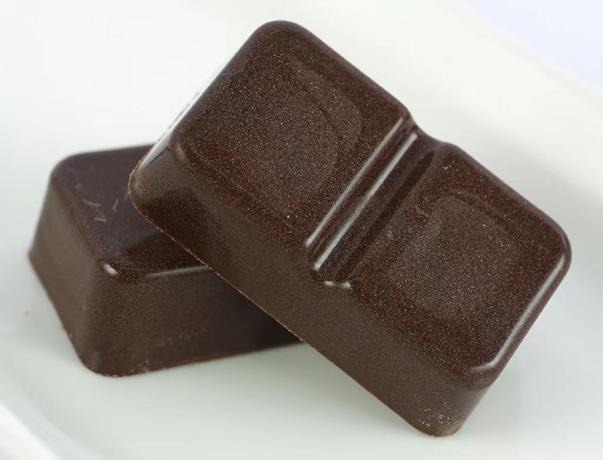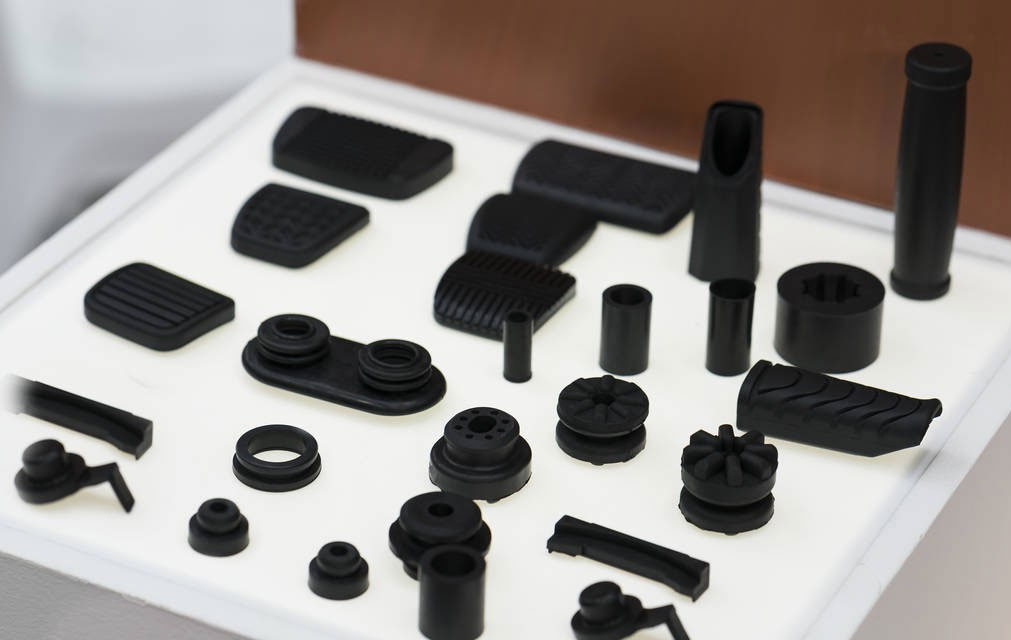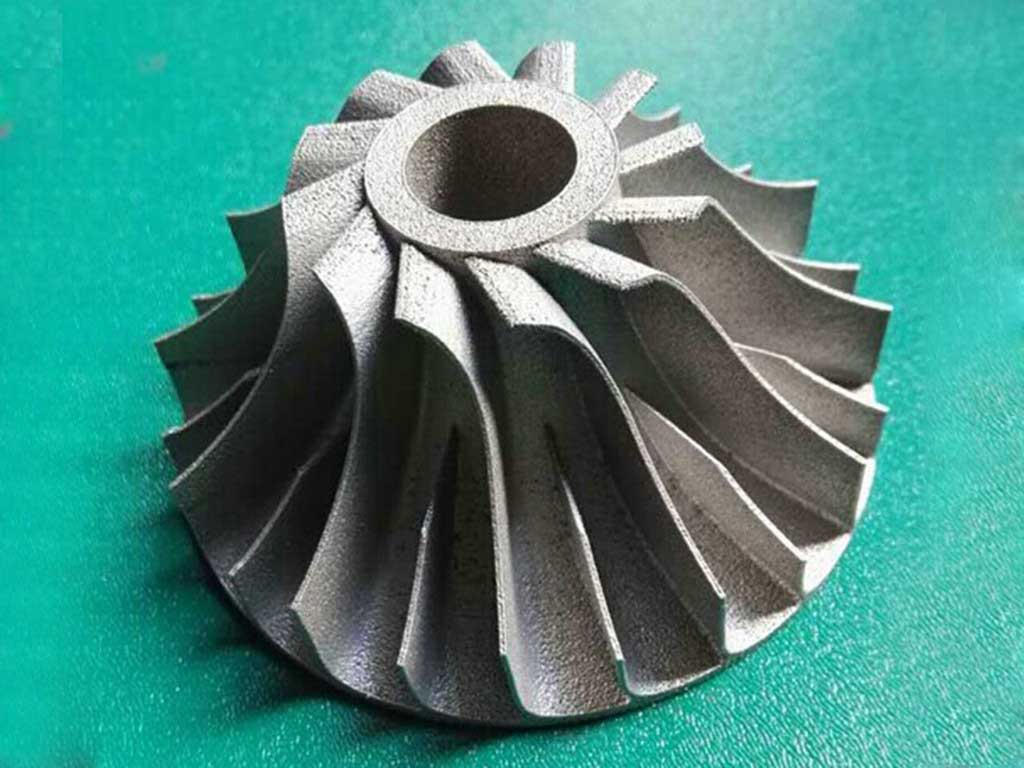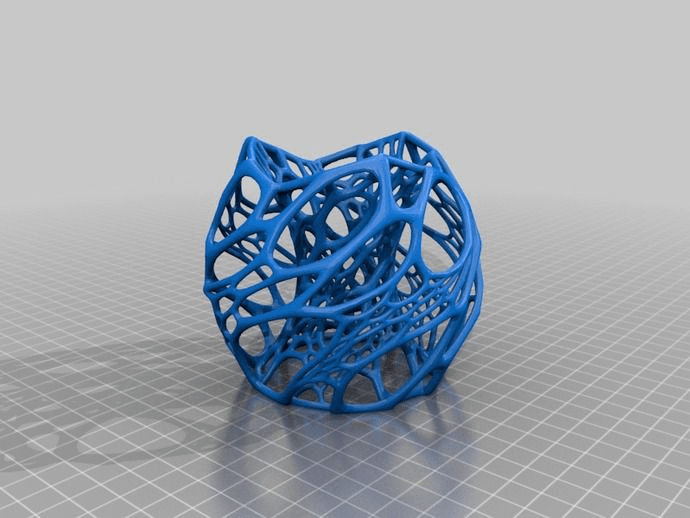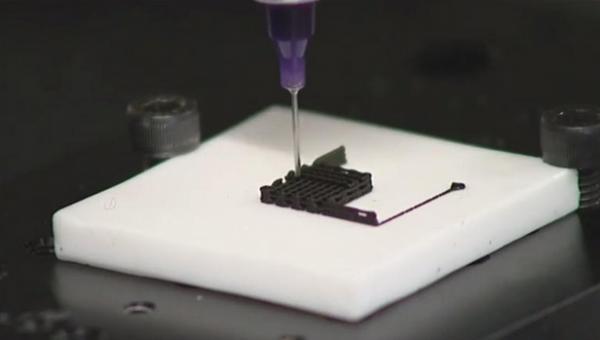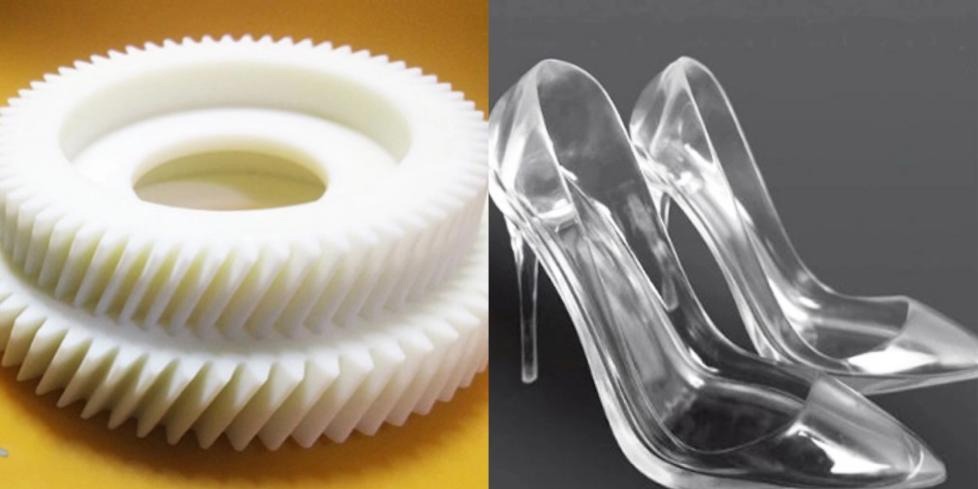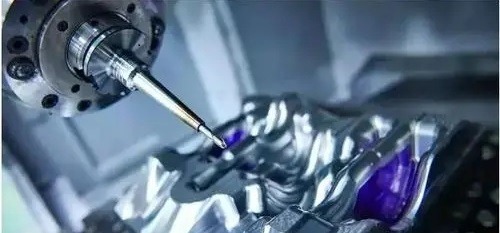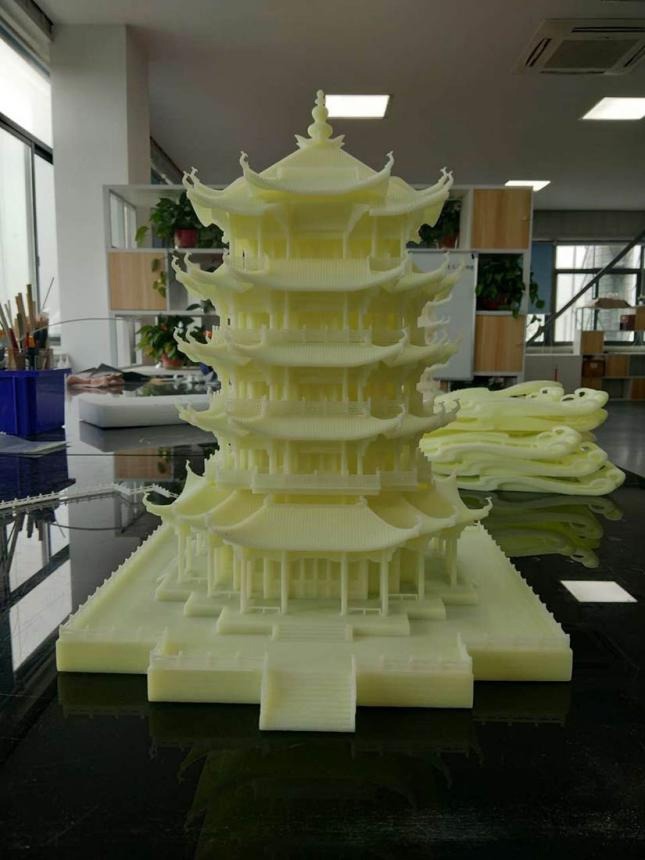According to 3D Science Valley’s Market Watch, composite materials have found a place in a variety of applications. They provide proven materials and methods for the manufacture of various valuable components, especially major aircraft components. The application of composite materials is still advancing, and today, 3D printing is accelerating this progress. The development of additive manufacturing technology provides a way to make parts out of composite materials without the need for molds, and at the same time, additive manufacturing provides new options for the manufacturing methods of the composite materials industry.
More flexible composite manufacturing
The development trend of 3D printing-additive manufacturing is towards a multi-dimensional deepening level, facing mass production applications, and extending to the application side. A development path to industrialization is the combination of new materials and new manufacturing processes.
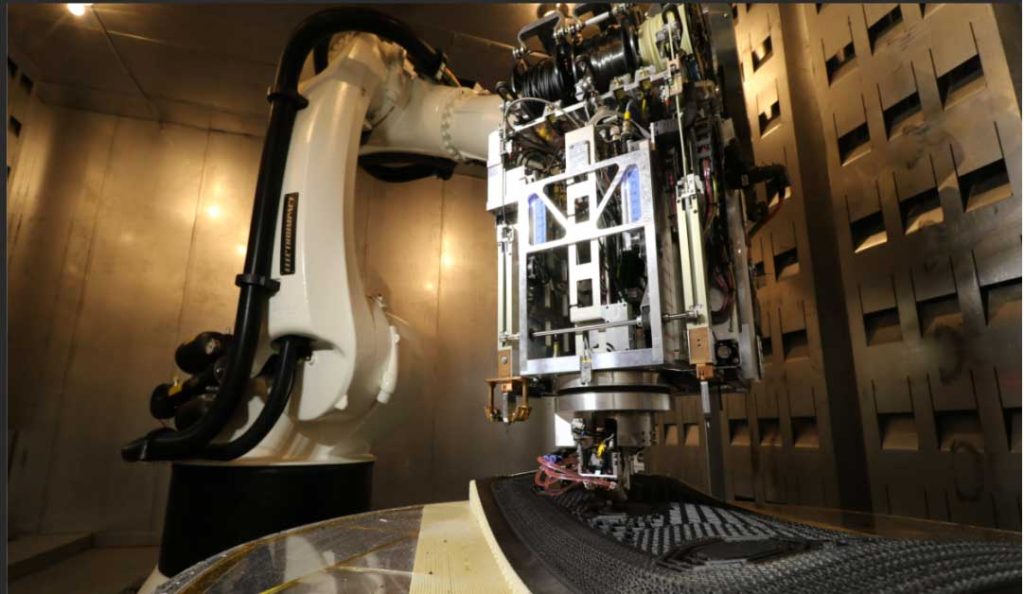
“Composite” generally refers to a thermoset or thermoplastic polymer matrix material reinforced with continuous or discontinuous fibers, typically carbon fibers; glass fibers; or natural fibers such as jute, flax, aramid, or basalt fibers.
In the aircraft industry, for example, in 1970 airliners had zero composite materials, and today the Boeing Dreamliner is 80 percent composite. In addition, in the automotive industry, for example, GE was able to replace many of the stress-free steel parts on cars, such as bumpers and air filter housings, with plastic parts in the 1980s. Additively manufactured carbon fiber composite parts can successfully replace many existing parts in the same way.
Relative to the aircraft industry, the earliest opportunity for carbon fiber composite 3D printing in the automotive field may fall on parts such as spoilers, steering wheels or door handles, and then gradually move towards replacing large structural components.
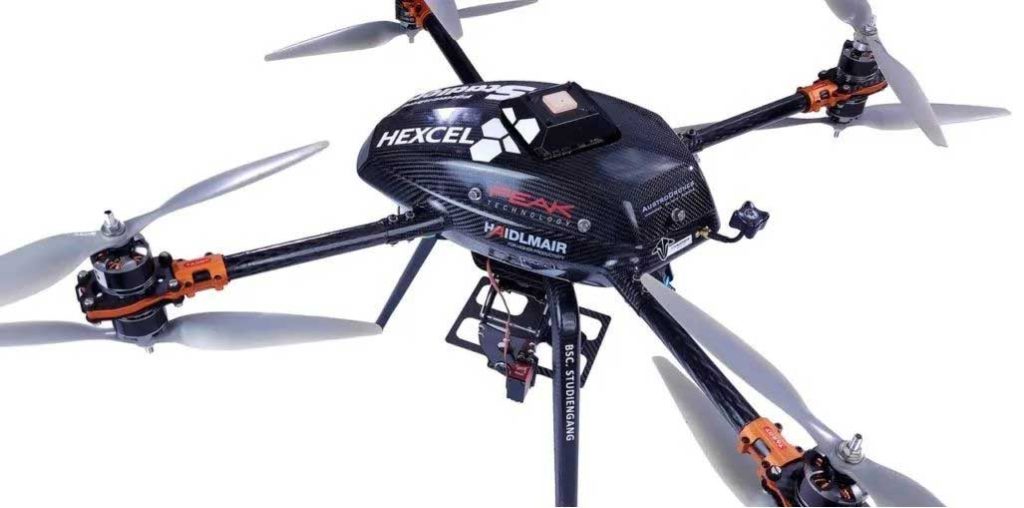
For the audience, the most valuable end market for composites today is aerospace. In aerospace, composites are used in a variety of parts and structures, including fuselage skins, stringers, and frames; wing structures, including wing skins, spars, and stringers; and tail structures; and more discrete components, Such as around windows, interior components, including luggage storage compartments and interior partitions. Walls inside aircraft are also often made of composite materials.
At the same time, other end markets in terms of the material volume include the wind power industry, such as wind blades made of composite materials.
For composite manufacturing, the role of additive manufacturing is to make parts more efficient and faster which may not be possible with existing composite manufacturing when discrete parts or low-volume manufacturing are considered. Additive manufacturing makes this possible, and through the use of continuous fibers in the additive, elements of strength and stiffness will be introduced, which takes the application aspect of the part to the next level.
5 techniques for 3D printing composites
1. In-situ impregnation: The dry fibers are fed into a nozzle while the matrix material is injected by one or more inflow means during deposition by co-extrusion. The matrix is introduced and heated and the fibers are impregnated in situ before deposition.
2. Co-extrusion with towering: instead of dry fibers, prepreg/thin prepreg tape is fed into a nozzle, heated, and co-extruded with other matrix materials. Typically, the matrix in the two is the same as that in the coextrusion. Anisoprint is an exception, where the prepreg matrix is thermoset while coextrusion is thermoplastic.
3. Towpreg extrusion: The input of tow stock is heated and extruded without any other material.
4. In-situ consolidation: This process is similar to a scaled-down version of automated fiber placement (AFP) for thermoplastics, where the incoming thermoplastic tow/prepreg tape is cured in-situ as it is deposited. During the feeding process, the raw material is heated by an external energy source at the nozzle, and then placed and cured by pressure rollers during the deposition process.
5. Inline impregnation: Similar to 3D filament winding, the fiber is impregnated as it is delivered to the print head. As with tow extrusion, deposition occurs through a nozzle.
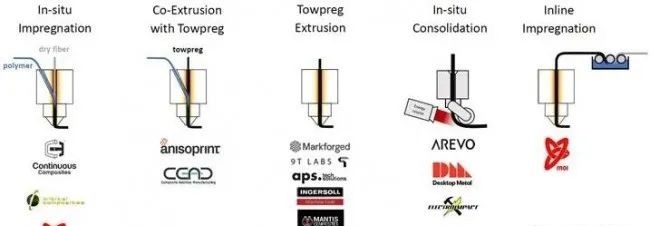
Application development of composite 3D printing
So what parts can be made in composites now, or maybe it will be easier due to the AM-Additive Manufacturing process?
Various brackets and fasteners are used extensively in the aerospace industry – especially in some aeronautical structures. For example, a series of frames and stringers within the fuselage skin. Under the current manufacturing regime, a mechanical fastener is required to connect the frame and structure to the fuselage skin. This is currently being done using a variety of complex brackets and fasteners as well as other hardware fabricated using traditional composite fabrication (compression molding) and can see this being done more efficiently through additive manufacturing in the future depending on volume and material requirements this work.
Of course, not only in large-scale application scenarios such as aircraft, but 3D printing composite materials also have imaginative application space in small scenarios.
AM-Additive Manufacturing makes composites increasingly practical for smaller, more complex, and low-volume manufactured parts. Composite producer Hexcel, for example, also uses the company’s “HexAM” composite additive manufacturing process to 3D print unmanned aerial vehicle (UAV) components.
But when it comes to low-volume, somewhat complex parts, a more imaginable part might be a replacement for today’s machined metal parts. The replacement of metal parts with composites has been the way the composites industry works for about 50 years. However, the challenges faced by additively manufactured composite materials to replace metal products need to be addressed.
3D printing service providers
There are many 3D printing service providers on the market today. The presence of these manufacturers has caused people to feel overwhelmed when choosing a 3D printing service. At the end of the article, I will recommend you a professional 3D printing service provider – JTR Machine. It is one of the best 3D printing companies in China. They provide customers with complete product solutions according to their needs, and choose to use 3D printing processing or traditional CNC processing according to product characteristics. Complete parts and products in the most correct way. If you need such a professional 3D printing service provider to solve your production problems for you, please contact us.


